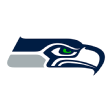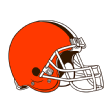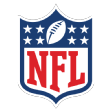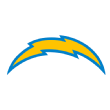NFL teams and players most likely to improve or decline the rest of the 2019 season
It's easy to have a short memory in the NFL. When the 2019 season started, the most promising young quarterback in the AFC North was Baker Mayfield. The dominant team in the NFC West was supposed to be the Los Angeles Rams. TheNew York Jetswere a hot sleeper pick to sneak into the playoffs in the AFC. Mitchell Trubisky's odds of winning league MVP (22-1) were virtually identical to those of Russell Wilson (20-1).
A lot has changed, but all we've seen are nine to 10 games from each team. That's a couple of weeks of action in baseball or about three weeks of a typical NBA season. There was a 16-game stretch early in the MLB season in which the Washington Nationals went 4-12. In a 162-game season, that didn't mean much; they were otherwise 89-57, made it to the playoffs and won the World Series. In the NFL, teams only get those 16 chances to show what they can do.
As a result, we often draw hasty conclusions from what we see over a small sample. Players and teams do something that's unsustainable over a significant length of time, but in a league in which they play only once per week, those performances feel more meaningful than they actually are. If you apply some historical context to what the NFL has looked like over the first half of the season, you can see elements of the game that probably aren't going to recur over the remainder of the 2019 campaign.
I've gone through the data and found a handful of relevant pieces of information surrounding some of the league's most notable players and teams. Let's see what history says about the rest of their seasons to come:
Jump to a section:
SEA's issue | CLE's outside chance
The DAL mystery| Two rising teams
RBs to improve | WRs to improve
Improving offenses | Declining defenses


1. It's going to be tough for Christian McCaffrey to keep this up
Let's start with the best running back in football. McCaffrey came within a few inches on Sunday of his fifth multi-touchdown game of the season, as the Packers stopped McCaffrey at the goal line to secure a 24-16 victory. McCaffrey did rack up 100 rushing yards for the sixth time in nine tries -- he has more 100-yard games than any other running back.
One of the ways he has consistently topped that mark? Long touchdown runs. He already has scoring runs of 40, 58, 76 and 84 yards. There are a lot of great runners in the NFL right now, but nobody else has more than one touchdown rush of 40-plus yards this season, so McCaffrey is way ahead of the pack.
When you look at history, it's clear he is in rare company. McCaffrey already has become the 21st back in league history to produce four or more touchdowns of 40-plus yards in a season, a group Saquon Barkley joined in his rookie season. Just three backs have run for five such scores in a single season: Barry Sanders (1997), Chris Johnson (2009) and Jim Brown (1963). The legendary Browns back also is the only runner in NFL history to score six such touchdowns in a single season, hitting that mark in 1958.
Remember: Those backs took an entire season to get to four, five and six. McCaffrey ran for his fourth such score by his eighth game of the season when he scampered 58 yards to the house against the Titans. If he were to keep this up and hit seven or more such scores by the end of season, it would be the first time any back would have racked up that many lengthy touchdown runs in NFL history.
I wouldn't count on McCaffrey adding many more 40-plus-yard touchdown runs to his total. (Barkley, it should be noted, doesn't have any this season.) It's true that McCaffrey does offer more than just about any other back as a receiver, which makes it possible he could add a long receiving score or two to the ledger. But it would be an upset if he kept taking long scores to the end zone over the remainder of the campaign.

2. The Seahawks aren't home free (yet)
Monday night's win over the 49ers was huge for the Seahawks. You don't need me to tell you that. What might be surprising to Seahawks fans, though, is that a loss against the 49ers would have left their favorite team as underdogs to make it back to the postseason, even given that a loss would have dropped Seattle to a still-impressive 7-3. Now at 8-2, ESPN's Football Power Index(FPI) still thinks the Seahawks miss the postseason about one out of every five times.
With the league favorite for MVP at quarterback and one of the best home-field advantages in all of football, why is FPI relatively pessimistic about the Seahawks? It starts with strength of schedule. Even after traveling to play the 49ers in San Francisco, the Seahawks still have what FPI figures as the third-toughest slate in all of football over the remainder of the season. After the bye, five of Seattle's final six games come against teams with a winning record. On the schedule are road trips to face the Eagles, Rams and Panthers, along with home games against the Vikings, Cardinals and 49ers -- in a season-ending rematch.
The other blemish on the Seahawks' résumé is that they've played virtually an entire season of close games and won almost every one of them. They are 7-1 in games decided by a touchdown or less, and many of those games have come down to last-minute success. They already have won four games in which they trailed at one point during the fourth quarter, including hard-fought victories over underwhelming teams such as the Bengals, Browns and Buccaneers. They needed both Rams star kickerGreg Zuerlein and rookie 49ers kicker Chase McLaughlin to miss game-winning field goal attempts, which they both did.
The Seahawks have outscored their opponents by just 21 points over 10 games, which we typically associate with a team that should win about 55% of its games. The Seahawks are instead 8-2, and while those wins are already in the bank and count just as much as blowout victories, the evidence suggests that this team is closer to good than great. They've likely already done enough to make it to the postseason, but it wouldn't be shocking if the Seahawks struggled over the remainder of the season.
The Saints also could struggle to keep up their level of success, after having gone 5-0 in one-score games, but they've been more dominant than that number indicates. In the Saints' win over Seattle, for example, the Seahawks only made it a one-score game by scoring with literally :00 left on the clock. The Buccaneers made it 31-24 by scoring with 19 seconds left. Even the 11-point win over the Bears seemed closer than it actually was by virtue of two Chicago touchdowns in the final three minutes.

3. Don't count out the Browns (yet)
When I wrote this column last year, I went searching for a team to go on an unexpected playoff run. I found the Colts. Indy was 3-5, but statistical indicators suggested that it was better than that, and the Colts had an easy schedule going forward. They promptly finished 7-1 and won a wild-card berth in the final game of the regular season.
There's no candidate quite as obvious this time around. The 4-6 Chargers are 2-6 in one-score games and about to get back Derwin James, but after facing the league's sixth-easiest schedule through Week 10, Philip Rivers& Co. face the toughest schedule in football over the remainder of the season. Things are similarly frustrating for the Bears, who will go from the league's eighth-easiest schedule to its second-toughest over the remainder of the season.
As frustrating as the Browns have been over the course of 2019, there's at least some reason to think they could still feature in the postseason. Their case isn't anywhere near as obvious as last year's Colts, but by beating the Bills on Sunday, the 3-6 Browns gained a key tiebreaker over a team who should also figure in the wild-card race. They also hold a win over the division-leading Ravens, although they're still four games behind Baltimore in the win column.
What makes this work for the Browns is their schedule. To this point, Cleveland has faced the league's fourth-toughest schedule. Over the next seven games, though, the Browns face what is projected to be the league's easiest slate. Five of Cleveland's final seven games are against teams that have already made a quarterback change (or two) this season, with a game against the Dolphins and home-and-homes against the Bengals and Steelers. Matchups with the Cardinals and Ravens finish out a beatable schedule for Cleveland.
The Browns certainly aren't favorites to make the playoffs. They're not even likely. FPI pegs Cleveland's chances of making an unexpected run to the playoffs at 11.9%. I would probably put them in the 15% to 20% range. It's more likely that they end up salvaging their season into something that augurs hope for 2020 with a respectable finish than it is that Cleveland actually makes it into January football. In a tier with teams such as the Rams (17% chance of making it to the playoffs), Jaguars (15.7%), Titans (13.6%) and Panthers (10.9%), the Browns are the most compelling option.


4. The Eagles and Steelers are on the rise
Among teams at the next tier of playoff contenders who have a good shot of exceeding expectations, I look toward Pennsylvania. The Eagles' pass defense has been a mess, and they face the Patriots this week, but even including that matchup, Doug Pederson's team faces the third-easiest schedule in football over the remainder of the season. After matchups against the Patriots and Seahawks, the Eagles finish with two games against the Giants, road trips to face Miami and Washington and a rematch with the Cowboys. FPI has the Eagles as slight underdogs to win the NFC East versus the Cowboys, but I think Philly is in better shape.
When I suggested the Steelers were the most likely 0-2 team to make it to the postseason even after losing Ben Roethlisberger, my argument was simple: The defense was too good to give up on after two weeks. The Steelers ended up starting 0-3, but their losses came to teams that are a combined 24-4 in the Patriots, Seahawks and 49ers.
From Week 3 on, the Steelers rank third in QBR allowed (21.5), seventh in yards per carry allowed (3.8), fourth in sack rate (9.7%) and first in takeaway rate. They have forced takeaways on 27.7% of opposing drives, which is more than double the league average of 12.3%. The only other team to top 20% over that time frame is New England, which is at 22.0%.
You can't count on the Steelers forcing as many takeaways from here on out. They lead the league in both fumbles forced (21) and recovered (12) on defense, and both figures raise an eyebrow. Consider that the 2018 leader in fumbles recovered on defense after 10 weeks was the Browns, who had recovered an identical 12 fumbles on 21 tries. Over the remainder of the season, they recovered only two fumbles.
Minkah Fitzpatrick has figured into many of those takeaways. He has had an immediate and undeniable impact on the defense, although his effects may be slightly overstated. Last week, he had a fumble bounce into his hands and an interception tipped to him by a great play from Joe Haden in a play where Fitzpatrick was the deep safety on that side in what appeared to be Cover 6. It's tempting to chalk that up to him being in the right place at the right time, but given how rarely even the best safeties recover fumbles or catch tipped interceptions, it's more likely piling a bit of randomness onto a great season.
I was skeptical of the Fitzpatrick trade when it happened. While I liked Fitzpatrick, dealing a first-round pick for the Dolphins defensive back seemed naive from a Pittsburgh team that was going to spend the rest of the year with Mason Rudolph at quarterback. The most likely outcome for the Steelers was going to be a disappointing season, and by trading away their first-round pick, they were dealing away their best shot at drafting a quarterback who could step in and replace Roethlisberger.
Well, the Steelers' season is back on track. Pittsburgh has won four straight games to get to 5-4, and it faces the league's sixth-easiest schedule over the remainder of the season. After Week 10, FPI makes the Steelers slight favorites to make it to the postseason at 51.3%. It would take a significant collapse (or an injury to Lamar Jackson) for the Ravens to fall out of first place in the AFC North, but the Steelers are near the top of a crowded AFC wild-card race with seven weeks to go.
That Pittsburgh pick in the 2020 draft likely won't be high enough for the Steelers to miss out on drafting a top quarterback, so that part of my argument against the trade no longer applies. At the same time, though, one of the reasons the Steelers reportedly made this deal was because they felt like they wouldn't drop off much from Roethlisberger with Rudolph.
It's still too early to draw any long-term conclusions about Rudolph's future, and he certainly has shown an ability to hit receivers downfield, but it would be naive to pretend that the Steelers are as effective on offense with Rudolph as they were with the future Hall of Famer. Rudolph has a 41.8 Total QBR, which ranks 26th in the league. Roethlisberger had a 69.6 Total QBR in 2018, the fourth-best mark in football. It's fair to say the training wheels are still on the rookie, who has thrown an even 34% of his passes at or behind the line of scrimmage, the highest rate in football. As a result, even though Rudolph's completion percentage is right around league average, he's averaging just 6.5 yards per attempt, 31st among starting quarterbacks.
There's nothing wrong with slowly integrating a new quarterback into a scheme, but it's at odds with what the Steelers suggested was the short-term benefit of making the Fitzpatrick trade. Rudolph hasn't been good enough for the Steelers to make a serious playoff run, even if they get there. If the defensive turnovers subside, Pittsburgh will need that easy schedule and some improvement from its second-year quarterback to make it to the postseason.

5. Some awful offenses should get better
With apologies to the Browns and Rams, the most disappointing offense of 2019 has to belong to Matt Nagy in Chicago. As recently as August, the Bears coach insisted that Mitchell Trubisky was way ahead in terms of reading defenses from where he was in 2018. I don't need to tell you things have gone poorly. Trubisky showed signs of life in throwing three touchdown passes during Sunday's win over the Lions, but even the most hardcore of Bears fans would have to admit that this has been a wildly disappointing season from the Chicago offense.
Inflated expectations are partly to blame. Even last season, the Bears were just 20th in offensive DVOA, behind teams such as the Giants, Broncos and Bengals. One other problem, though, has been what Trubisky's receivers have done with the ball in their hands. Chicago is averaging just 3.93 yards after catch this season, which comfortably ranks last in the league. Over the past decade, just seven teams have averaged fewer than 4.0 yards after their receptions; the Bears have enough weapons to make me think that number won't become eight.
If you're someone who owns Joe Mixon or Tyler Boyd in fantasy football, you've also probably been wondering where the touchdowns have gone. The Bengals have been a mess across the board this season, but their red zone performance is on a different level. Cincinnati has failed to score on eight of its 27 red zone possessions, which is incredible for a team that has spent so much of its year in garbage time. The Bengals have nearly as many zeros in the red zone (eight) as they do touchdowns (nine), which is about as bad as an offense can get.
ESPN has red zone data going back through 2001, and over that time frame, only four teams -- the 2006 Raiders, 2009 Rams, 2010 Panthers and 2012 Chiefs -- have turned the ball over without scoring in the red zone more frequently than they've punched the ball in for touchdowns. Cincinnati is averaging just 3.43 points per red zone trip, which is nearly a half-point worse than the 31st-ranked Washington offense. Even with a porous offensive line and rookie quarterbackRyan Finley taking over for Andy Dalton, this red zone offense should be better by sheer chance over the remainder of the season.
Washington is also likely to be better inside the 20 on offense, as should the Air Raid attack of Kliff Kingsbury in Arizona. Those are the only three offenses in the league averaging fewer than four points per red zone trip on offense so far this season, and red zone performance is inconsistent over any length of time.
On the flip side, another reason to worry about the Seahawks is their performance inside the 20. Russell Wilson& Co. have averaged a league-best 5.44 points per red zone trip this season, turning more than two-thirds of their red zone trips into touchdowns. (Only the Packers, Bills and Titans have scored touchdowns more frequently.) It would make sense that a Wilson-led offense would excel inside the 20, but the Seahawks averaged a far more reasonable 4.88 points per red zone trip from 2016-18.
Even if the line is better now than it was during those past few years, it's tough to imagine that the Seahawks will hover far above five points over the remainder of the season.

6. The Cowboys could go in any direction
No team is dealing with more mixed signals than the Cowboys. You can make a case that they're better than their current record. You can make a case that they're not as good as their record. I'm not sure which is more persuasive.
After going 8-2 in games decided by seven or fewer points last season, the Cowboys are 0-3 in those same games in 2019. Those losses include a 24-22 loss to the Jets in which the Cowboys failed to convert a 2-pointer to tie the score in the final minute and last week's 28-24 loss to the Vikings, when Dak Prescott marched the Cowboys downfield and Dallas inexplicably decided to run the ball twice when it got there. The Cowboys weren't going to go 8-2 in those games again in 2019, but they should win about half of their close games going forward.
Prescott also could get some help from his receivers. Dallas receivers are dropping 4.4% of his passes this season, the fifth-highest rate in the league. When you consider that Prescott is completing 68.3% of his passes -- 7.1% more than his expected completion rate by NFL Next Gen Stats, the largest positive gap for any full-time starter this season -- the difference between a typical season of drops and what Prescott has dealt with might be keeping him from serious MVP consideration.
There are some elements of Dallas' offense that are unlikely to be quite as fruitful from here on out, though. It has converted an even 50% of its third- and fourth-down tries, which is second behind the Ravens. The Dallas defense, meanwhile, has stopped opposing teams from moving the chains on two-thirds of its third downs, the third-best mark in football. Both of those figures are tough to keep up over an entire season.
While the Cowboys' schedule isn't tough, the competition is going to get tougher. They had the league's third-easiest schedule through the first 10 weeks, but they're right around league average from Weeks 11-17, with the 15th-toughest slate. Five of their games have come against teams that would pick in the top five of the draft if the season ended today, with the Cowboys going 4-1 in those contests. Just one of their remaining games -- the Week 17 contest against Washington -- comes against a team with one of the 10 worst records in football.


7. The league's best defenses probably won't be this good
There's a two-team race for the best defense in football. The Patriots and 49ers are first and second in DVOA, and there's a chasm between them and the pack. The third-placed Steelers are closer to the 25th-placed Lions than they are to the 49ers. Realistically, these two defenses are so far ahead that it's difficult to see any team catching up.
Asking the Patriots and 49ers to keep up their current level of play, though, might be too much. Even after the Pats put up their worst performance of the season against the Ravens in Week 9, they still have to expect some regression on third down. They are allowing opposing offenses to convert on just 18.9% of their third-down attempts this season. No other team is under 30%, and the modern record for any defense is the 25.2% mark posted by the Vikings in 2017. It's almost impossible to imagine New England finishing the season with a sub-20% conversion rate.
Richard Sherman& Co., meanwhile, can't expect to be this good in the red zone. The 49ers have allowed opposing offenses to average only 3.35 points per trip inside the 20. The Patriots (3.70 points per red zone trip) and Broncos (3.8) are the only other teams allowing fewer than 4.0 points per red zone opportunity on defense. The 49ers are excellent at keeping teams out of the red zone to begin with, but it's almost impossible to be this good at holding them to field goals and missed opportunities once they get there for an entire season.
One other reason to expect the 49ers to fade, at least a tiny bit: their pass rush. Research I've conducted has pointed out that there's virtually no relationship or predictive value between a team's pass rush over the first half of the season and the second half of that same campaign. So while the 49ers have racked up a league-high sack rate of 11.4% through Week 10, history suggests that their second-half sack rate is totally up in the air.
The same concerns would expect the Panthers (9.5%), Patriots (9.5%) and Steelers (9%) to be less effective rushing the passer over the rest of the season. On the flip side, the Bengals, Falcons, Dolphins, Ravens and Seahawks all have sack rates under 5%. Several of them should improve over the remainder of the season.


8. Joe Mixon leads the list of running backs likely to score more TDs
The Bengals have been a mess in the red zone. Mixon bizarrely has three touchdowns on 21 catches this season, but not one of his 131 carries has resulted in a touchdown. The average back scores on about 40% of his carries inside the 5-yard line. Mixon has eight carries inside the 5 without scoring, which is hard to do on purpose.
If you watched the Browns game last week, you also could have guessed Nick Chubb was below expectations; his 11 carries inside the 5 have yielded minus-6 yards and just two touchdowns. Saquon Barkleyisn't 100%, but he has failed to score once on five carries inside the 5-yard line.
In the big picture, backs typically turn about one out of every 33 runs into touchdowns. By that measure, we would expect more out of Leonard Fournette, who has scored just once on 174 rushing attempts over the first nine games of the season. He has three runs of 65 yards or more that didn't result in touchdowns. Each of the six other runs that have gone for 65 yards or more this season have resulted in touchdowns. As a back capable of breaking big plays who also gets goal-line work, Fournette should score more over the second half of the Jags' season.
On the flip side, the obvious candidate for touchdown regression is Aaron Jones. The Packers standout has 14 touchdowns on 181 touches, or just under one score for every 13 touches. That's better than LaDainian Tomlinson's touchdown rate when he set the single-season record with 31 in 2006. The only back in NFL history to touch the ball 200 times and average fewer than 13 touches per touchdown is Marshall Faulk in his 2000 campaign.
It's hard to believe Jones will keep up this scoring rate. McCaffrey's touchdown rate also is out of line with running back norms. In looking at run-heavy profiles, Mark Ingram has eight scores on 123 touches, including seven scores on 12 tries inside the 5-yard line. As good as the Baltimore running game has been, even Lamar Jackson hasn't produced that sort of scoring rate in short-yardage situations.


9. Michael Thomasand the receivers who will likely score more TDs
Thomas is a viable Offensive Player of the Year candidate, but to beat out the likes of McCaffrey and Dalvin Cook, he's going to need to score more. Thomas has 86 catches, and the average wideout will typically turn about one out of every 13 catches into a touchdown. (That mark obviously gets influenced by where and when they catch passes, which is why you should look toward Mike Clay's OTD statistic for a more contextualized analysis. That 1-in-13 rate is a good starting point.)
Somehow, Thomas has just four touchdowns. The 1-in-13 rate would expect him to produce about 6.6 scores on 86 catches. Before 2019, he had 23 touchdowns on 321 receptions, which is about one for every 14.5 receptions. If his target share keeps up, his touchdown rate should increase.
Three receivers have a gap of three or more touchdowns between their expected total and actual total. Rams wideout Robert Woods leads the pack, as the former Bills starter has yet to catch a touchdown pass across 45 receptions this season. (Bizarrely, he does have a rushing score.) Tyler Boyd has one touchdown on 57 receptions as Cincinnati's primary target, while Carolina's DJ Moore has scored once in 54 catches. All three should score more frequently over the final seven weeks of the season.
The touchdown machine at wideout, meanwhile, has been the Lions'Kenny Golladay. The third-year star has turned 38 receptions into eight touchdowns, when the 1-in-13 rate would project him at 2.9 scores. His 6-foot-4 frame makes him a natural target in the red zone, but four of his touchdowns have come from at least 30 yards out. As gifted as Golladay is, it's tough to project that sort of touchdown volume moving forward.
This isn't necessarily a size thing. There are three other wideouts who have caught three more touchdowns than their reception totals would suggest, and they're three very different players: 6-foot-4 downfield threat Tyrell Williams, 6-foot-2 slot weapon Adam Thielen, and 5-foot-10 speed demon Mecole Hardman. They've combined to catch 74 passes and score 16 touchdowns. That's not sustainable.


10. Kickers are a disaster ... against the Chargers?
If you can't beat them, join them? The Chargers have struggled with disastrously bad kickers for most of the past few years, and while Michael Badgley seemed to solidify the position last season, the Money Badger missed the first eight games of the season with a groin injury. In his absence, the duo of Ty Long and Chase McLaughlin went 13 of 18 on field goals. Long went back to his duties as the team's full-time punter, while McLaughlin just spent one fateful week as the 49ers' place-kicker.
What is truly strange, though, is the line for opposing kickers against the Chargers. In 10 games against L.A., opposing kickers have gone just 12 of 22 (54.5%) on field goals and 16 for 21 (76.2%) on extra points. Missed kicks by Adam Vinatieri and Eddy Pineiro led to two of the Chargers' four victories this season. Why are kickers struggling in the friendly weather of Los Angeles when the Chargers play half of their games in a soccer stadium? That's a mystery to me, too.

